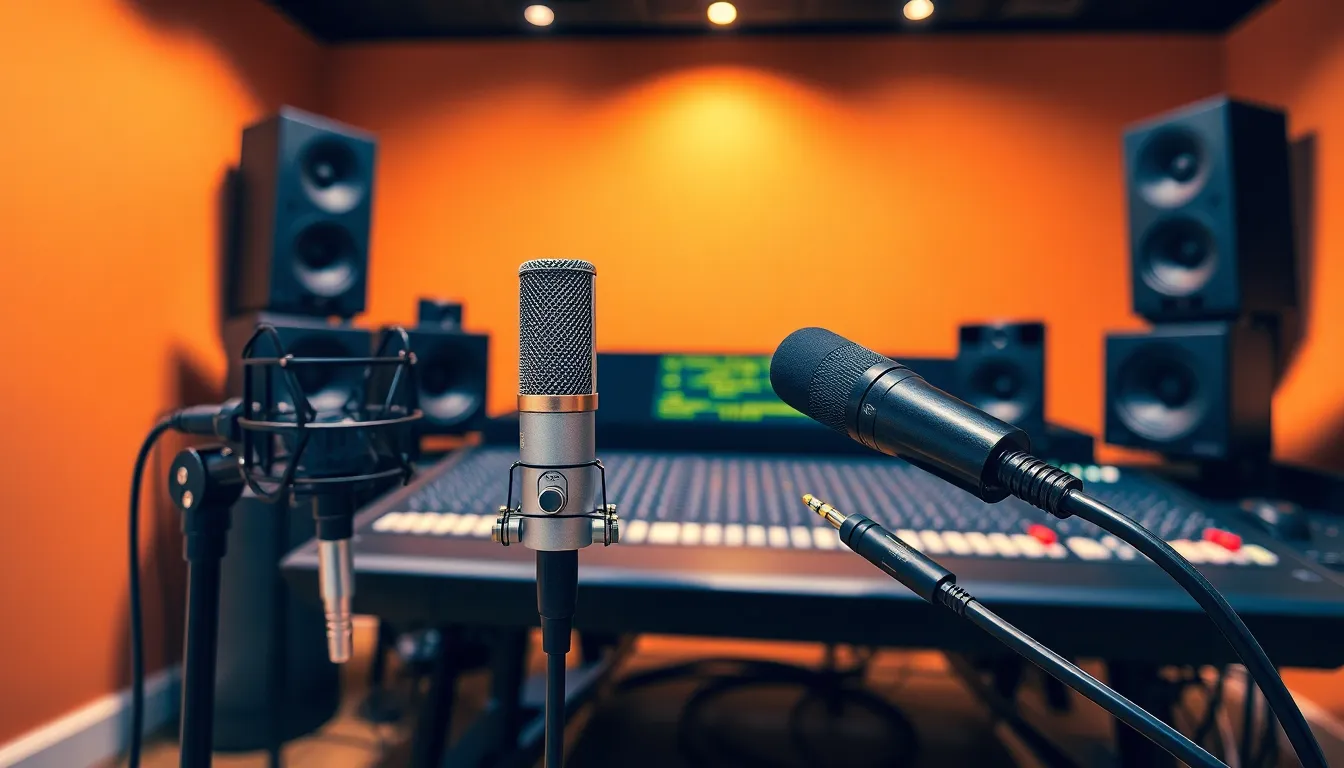In a world where sound quality can make or break a listening experience, balanced audio technology emerges as the unsung hero. Imagine enjoying your favorite tunes without the annoying buzz of interference or the dreaded imbalance that leaves one ear feeling neglected. Balanced audio is like the superhero of sound, swooping in to save the day with crystal-clear clarity and a harmonious blend of frequencies.
Table of Contents
ToggleOverview of Balanced Audio Technology
Balanced audio technology plays a crucial role in reducing noise and interference in audio signals. This technique employs a three-wire system consisting of positive, negative, and ground wires. By utilizing phase cancellation, balanced audio systems effectively eliminate electromagnetic interference from external sources.
Common applications of balanced audio include professional audio equipment and live sound environments. Many studio microphones and mixers rely on balanced connections to maintain audio integrity. This configuration allows for longer cable runs without the degradation of sound quality.
Balanced audio technology benefits from differential signaling, which amplifies the audio signal while rejecting any noise picked up along the way. This strong rejection capability significantly enhances overall sound clarity. Engineers and audio professionals consistently choose balanced systems for their superior performance in critical listening situations.
Different types of connectors, such as XLR and TRS, are frequently used in balanced audio setups. Each connector type facilitates a reliable connection while maintaining the integrity of the audio signal. These connectors ensure compatibility across various devices and systems, accommodating diverse audio configurations.
Listening experiences improve as balanced audio technology minimizes distortions that may arise in unbalanced systems. Customers favor these solutions for both music production and live performances, where clarity remains key. Overall, balanced audio technology stands as an essential aspect of modern sound engineering, ensuring high-quality audio delivery for audiences everywhere.
Key Features of Balanced Audio Technology

Balanced audio technology features essential characteristics that enhance sound quality. This technology performs exceptionally well in minimizing noise and maintaining signal integrity.
Noise Reduction
Noise reduction ranks high among the key attributes of balanced audio technology. It relies on a three-wire configuration that consists of positive, negative, and ground wires, which helps in canceling out noise. The phase cancellation method allows for the effective suppression of electromagnetic interference. Using balanced audio systems in environments like recording studios ensures that unwanted noise is kept to a minimum. Many professional microphones and mixers utilize this technology to deliver clear audio without extraneous sounds. Relying on this design, users experience less hum and buzz, increasing overall sound quality in live performances.
Signal Integrity
Signal integrity is another critical feature that sets balanced audio technology apart. This technology employs differential signaling, which significantly amplifies audio signals while rejecting noise. Enhanced clarity results from reduced distortion during transmission, ensuring that sound quality remains pristine over long distances. Balanced connections maintain the integrity of audio signals, essential in settings like concert venues and broadcasting studios. Many audio engineers value this aspect, recognizing that strong signal integrity maximizes fidelity in recordings and live sound. Adoption of connectors like XLR and TRS further contributes to reliable connections across various devices, ensuring optimal performance and compatibility.
Applications of Balanced Audio Technology
Balanced audio technology finds its way into various domains, primarily enhancing audio clarity and reducing noise. This technology is integral to both professional audio equipment and consumer electronics, ensuring an optimal listening experience across different environments.
Professional Audio Equipment
Professional audio equipment extensively employs balanced audio technology to maintain signal integrity. Studio microphones utilize balanced connections to provide clear sound, particularly during recordings. This technology plays a crucial role in live sound environments where audio quality is essential. Connectors such as XLR and TRS enable reliable connections between devices. Noise cancellation methods employed in these setups allow for clean audio transmission, especially over long distances. By minimizing interference, this technology becomes invaluable for sound engineers who prioritize high fidelity in performances and recordings.
Consumer Electronics
Consumer electronics increasingly incorporate balanced audio technology for enhanced listening experiences. Many modern devices, including high-quality headphones and home theater systems, utilize this technology to deliver superior sound. Balanced connections help avoid audio degradation, ensuring clarity whether in music playback or movie watching. Various smartphone models now include balanced audio outputs, allowing users to enjoy pristine sound quality. As consumers demand higher audio performance, manufacturers adopt this technology to meet their expectations effectively. This trend highlights a growing recognition of balanced audio technology in everyday electronic devices.
Advantages of Using Balanced Audio Technology
Balanced audio technology offers significant benefits in sound quality and clarity. Noise reduction stands out as a primary advantage due to the three-wire system, which effectively cancels unwanted interference. Distortion minimization occurs through differential signaling, ensuring high-fidelity sound even over long cable runs.
Another key benefit involves maintaining signal integrity, which is crucial in both professional and consumer audio setups. Professionals rely on balanced setups to preserve sound quality during recording and live performances. Consumers increasingly enjoy this advantage in high-quality headphones and home theater systems.
Compatibility among devices adds to the advantages of balanced audio technology. Standard connectors like XLR and TRS ensure seamless connections across various equipment, making setup easy and reliable. Enhanced dynamic range further improves audio experiences, allowing for a richer and fuller sound.
Durability factors into the overall appeal of balanced audio systems. Higher-quality cables used in balanced connections resist wear and tear better than unbalanced alternatives. Users benefit from this longevity during extensive use in both studio and performance environments.
Finally, balanced audio technology supports versatility in applications, from professional sound engineering to everyday pleasure. Its adoption across different audio devices reflects an industry shift towards superior audio performance. Ultimately, these advantages position balanced audio technology as a cornerstone of modern audio engineering practices.
Balanced audio technology stands as a pivotal advancement in the audio industry. Its ability to reduce noise and maintain signal integrity makes it essential for both professionals and consumers seeking superior sound quality. With the rise of high-quality audio equipment in everyday use, the demand for balanced connections continues to grow. This technology not only enhances listening experiences but also reflects a commitment to excellence in audio engineering. As manufacturers increasingly embrace balanced audio solutions, users can expect clearer and more immersive sound across a variety of applications.




